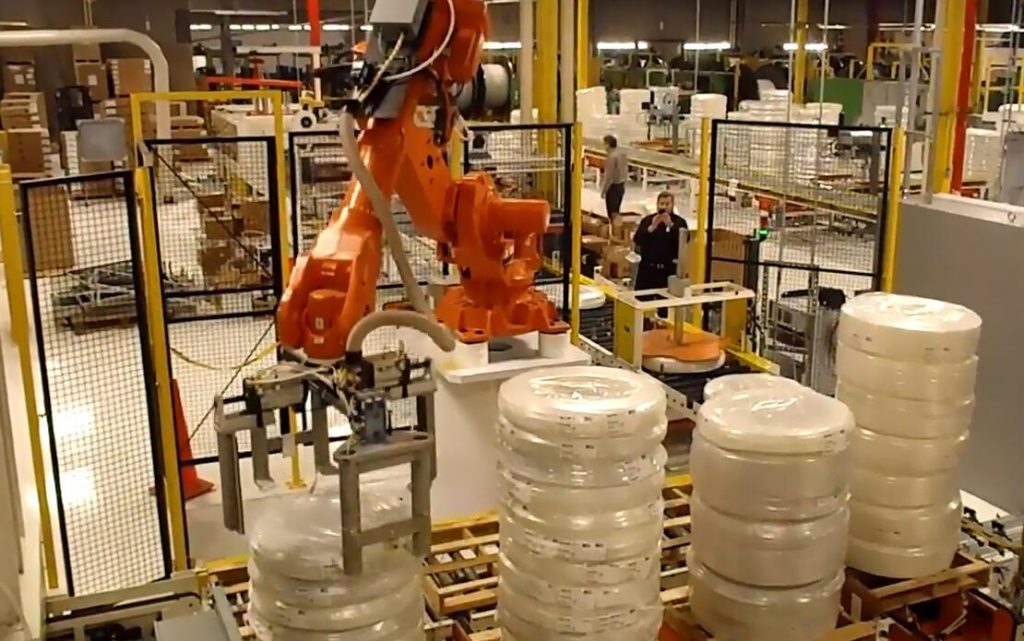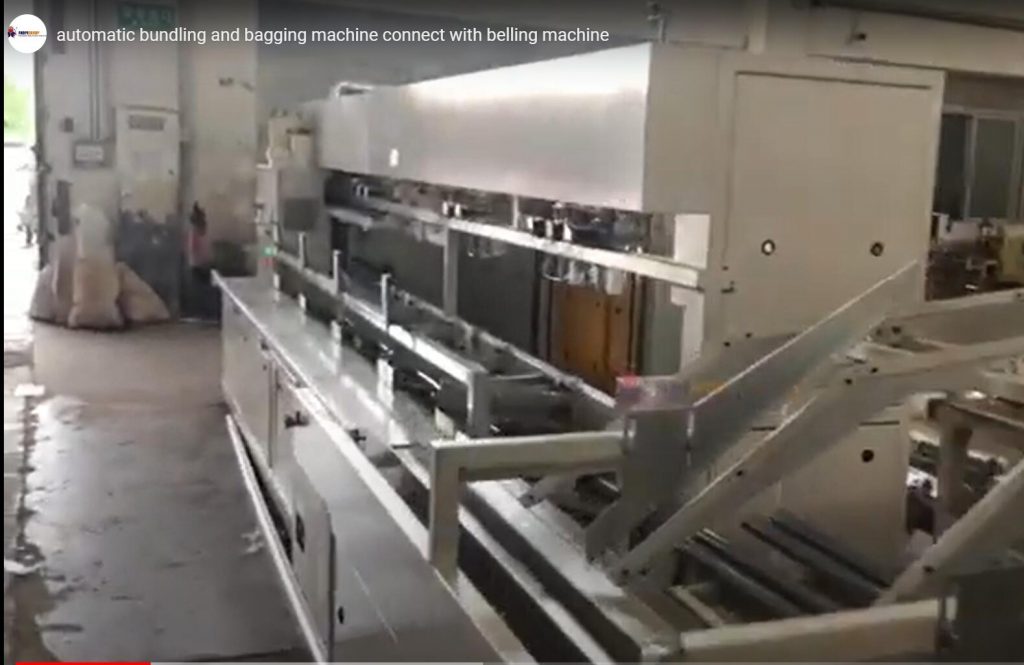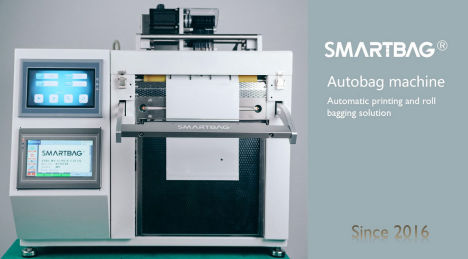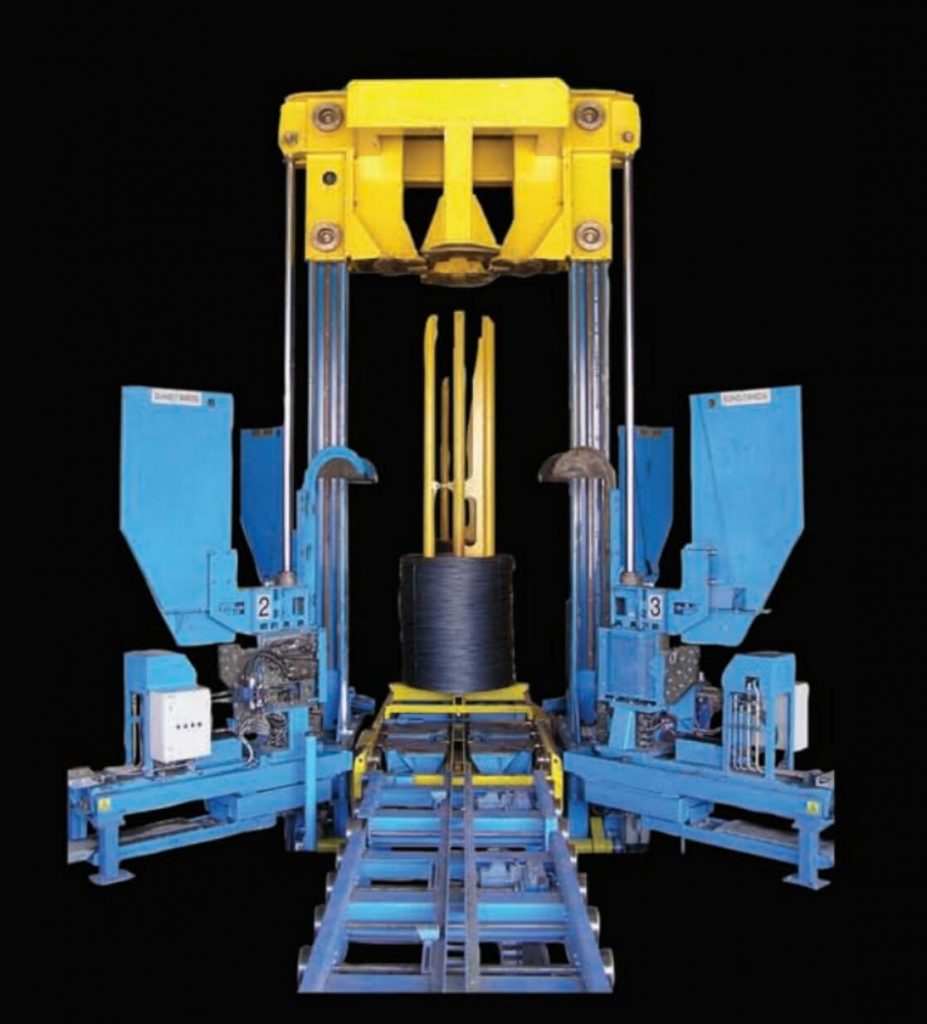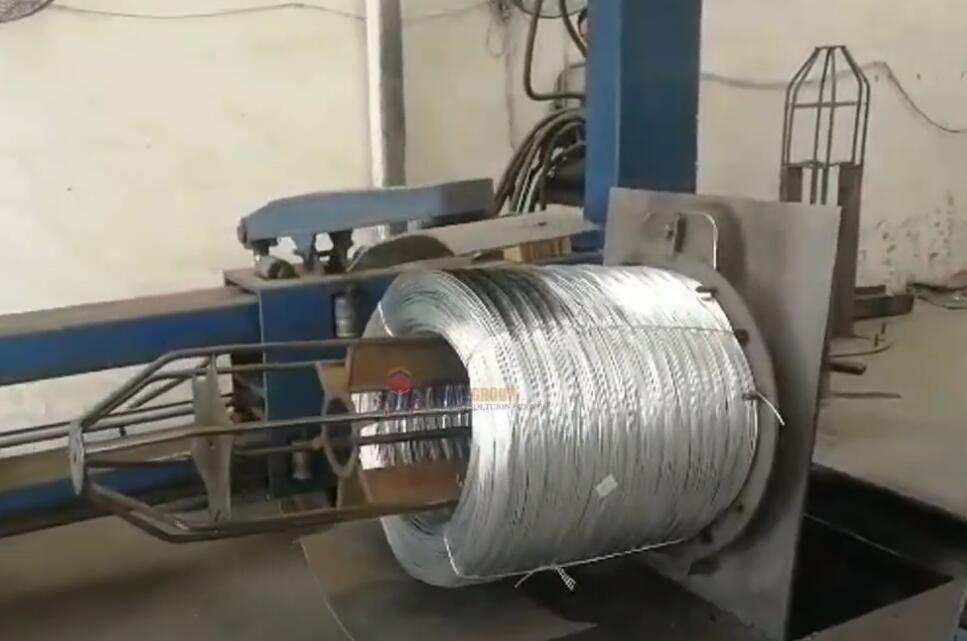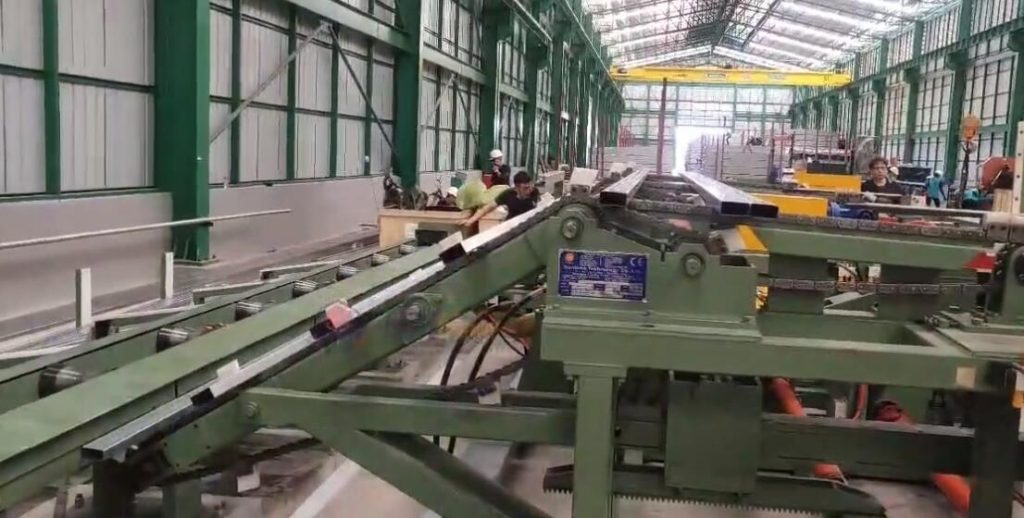Enhancing Furniture Logistics: Advanced Automated Sofa Packaging System
The global furniture market demands increasing efficiency and product integrity throughout the supply chain. Manual packaging processes, particularly for bulky items like sofas, often present significant bottlenecks, impacting throughput, cost-effectiveness, and final product quality. Addressing these challenges requires sophisticated automation solutions, as demonstrated by a recent implementation for a manufacturer in Bogotá, Colombia.
The Challenge: Overcoming Manual Packaging Inefficiencies
Traditional sofa packaging methods often involve manual wrapping, sealing, and transport between stations. This approach presented several critical issues for our Colombian client:
- Throughput Limitations: Manual packaging inherently limits the speed of the production line, creating a bottleneck that restricts overall output capacity.
- Inconsistent Quality: Variations in manual application of packaging film (like Polyethylene - PE) and sealing techniques led to inconsistent package integrity, potentially affected by operator skill, fatigue, and environmental factors (humidity, temperature). Research in Packaging Technology and Science consistently highlights the correlation between consistent seal integrity and protection against environmental ingress and transit damage.
- Logistical Complexity: Manually moving large, heavy sofas requires significant floor space and labor, increasing operational costs and the risk of product damage or ergonomic strain on workers. Efficient factory layout and material flow are key principles in lean manufacturing, often hindered by manual handling.
- Vulnerability to Damage: Inadequate or inconsistent packaging increases the risk of abrasion, contamination, and impact damage during storage and transportation.
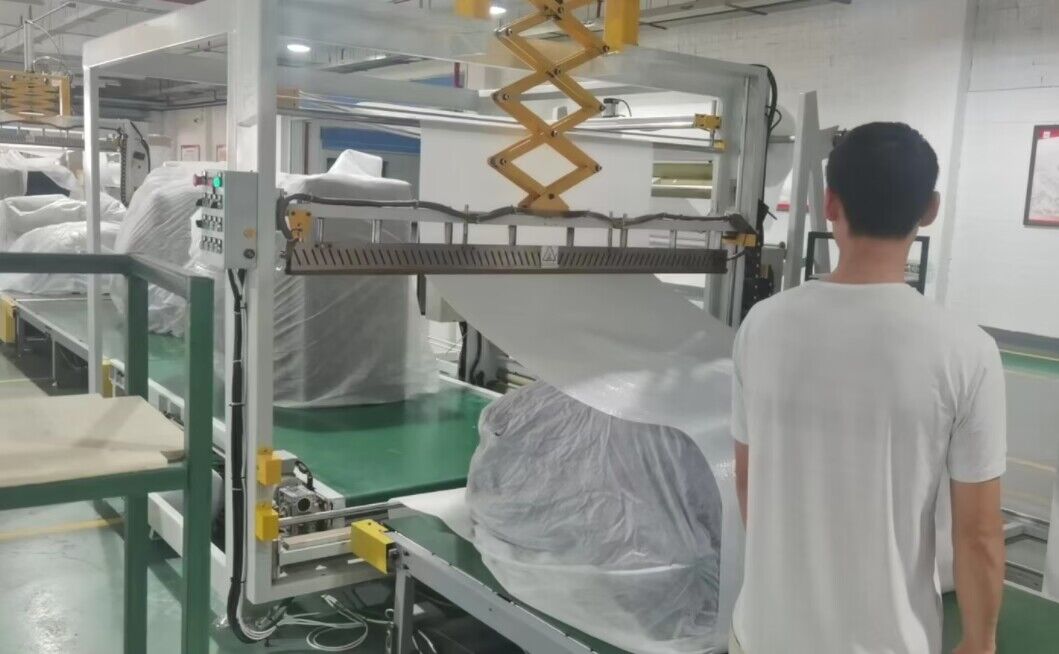
sealing The Solution: Integrated Automated Sealing and Conveyance
To address these operational hurdles, a customized automated packaging system was engineered. This system integrates several key technologies to streamline the sofa packaging process:
- Customizable Size Handling: The system is designed with adjustable parameters to accommodate a wide range of sofa dimensions, crucial for manufacturers with diverse product lines.
- Length: 800mm to 2500mm
- Width: 700mm to 1200mm
- Height: 700mm to 1000mm
- Automated Film Application and Sealing: Utilizes precise film dispensing and a robust sealing mechanism (often employing heat sealing technology, a subject of numerous patents focusing on temperature and pressure control, e.g., within USPTO class B65B 51/10) to create a consistent, secure wrap around the sofa. This ensures uniform tension and reliable seal integrity.
- Integrated Conveyor System: Automated conveyors (potentially roller or belt conveyors, depending on load and transfer requirements) seamlessly transport sofas through the packaging stages. This minimizes manual handling, optimizes floor space, and ensures a continuous workflow. Synchronization between conveyor sections and the sealing unit is critical, managed by a central Programmable Logic Controller (PLC).
- Precision Film Cutting: An automated cutter ensures clean, accurate cuts of the packaging film, reducing material waste and contributing to a professional package appearance.
Key Engineering Features and Operational Benefits
This automated solution delivers tangible improvements across several operational metrics:
- Automated Sealing Unit: Guarantees repeatable, high-integrity seals, protecting the product from dust, moisture, and minor abrasions. Consistent sealing parameters eliminate variability inherent in manual processes.
- Synchronized Conveyor Transport: Reduces transit time between processes, minimizes manual labor requirements for material handling, and enables a smoother, more predictable production flow. Aligns with Industry 4.0 principles of interconnected manufacturing systems.
- Automated Film Cutting Mechanism: Optimizes film usage, reduces waste, and ensures a neat final package, enhancing the perceived quality of the product.
- Integrated Control System (PLC & HMI): Provides a central point for system operation, monitoring, and diagnostics. Allows for easy adjustment of parameters (e.g., conveyor speed, sealing temperature, product dimensions) via a Human-Machine Interface (HMI), enhancing flexibility and reducing changeover times.
The synergistic effect of these features directly tackles the core challenges:
- Increased Throughput: Automation drastically reduces cycle times compared to manual methods.
- Enhanced Package Quality: Consistency in film tension and sealing improves product protection and aesthetic appeal.
- Optimized Resource Utilization: Reduces manual labor needs for packaging tasks and minimizes floor space required for staging and movement.
- Improved Ergonomics and Safety: Eliminates heavy lifting and repetitive motions associated with manual sofa handling and wrapping.
Technical Specifications Overview
While specific configurations vary, typical parameters for such systems include:
- Product Size Capability: As specified (800-2500mm L x 700-1200mm W x 700-1000mm H)
- Packaging Material: Typically Low-Density Polyethylene (LDPE) film; compatible thickness range specified by design.
- Sealing Technology: Constant heat sealing or impulse sealing bars.
- Conveyor System: Variable speed control, integrated sensors for product detection and positioning.
- Control Architecture: PLC-based control with touch-screen HMI.
- Power Requirements: Standard industrial voltages (e.g., 380V/480V, 3-Phase).
- Pneumatic System: Required for actuators (e.g., sealing bar, cutters), specifying pressure and consumption.
Conclusion: Advancing Furniture Manufacturing Efficiency
The implementation of automated sofa packaging systems represents a significant technological step forward for furniture manufacturers. By integrating automated sealing, conveying, and cutting functionalities, these systems address critical bottlenecks, improve packaging quality and consistency, reduce operational costs, and enhance workplace safety. As demonstrated by the successful deployment in Bogotá, this technology provides a robust solution for achieving greater efficiency and competitiveness in the demanding global furniture market.
Frequently Asked Questions (FAQs)
-
How does automation improve the structural integrity of the packaging?
The system applies packaging film with consistent, controlled tension and utilizes precisely regulated sealing parameters (temperature, pressure, dwell time) to create strong, uniform seals. This eliminates human variability, ensuring each sofa receives optimal protection against environmental factors and handling stresses, as validated by standard package testing protocols (e.g., ISTA procedures). -
Is the system adaptable to future changes in sofa designs or packaging materials?
Yes, the system is designed with flexibility in mind. The PLC controls allow for programmable recipes accommodating different dimensions and wrapping requirements. Sensor adjustments and potential modifications to film handling or sealing parameters can often accommodate variations in sofa geometry or alternative film types (within design limits), ensuring a degree of future-proofing. -
What level of technical expertise is required for system maintenance?
Routine maintenance typically involves cleaning sensors, lubricating mechanical components (bearings, chains), and inspecting wear parts (sealing elements, cutter blades), tasks generally manageable by trained plant maintenance staff. Comprehensive documentation and training are provided. More complex troubleshooting may benefit from remote diagnostics capabilities or specialized technician support offered by the system provider. Modular design often facilitates easier component replacement.
Ready to elevate your furniture packaging operations? Contact us to discuss how a tailored automated packaging solution can address your specific production challenges and enhance your competitive edge. Our engineering team can provide a detailed technical consultation and system proposal based on your requirements.

